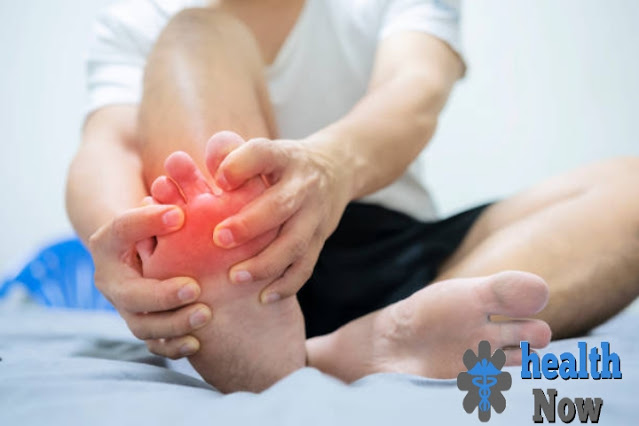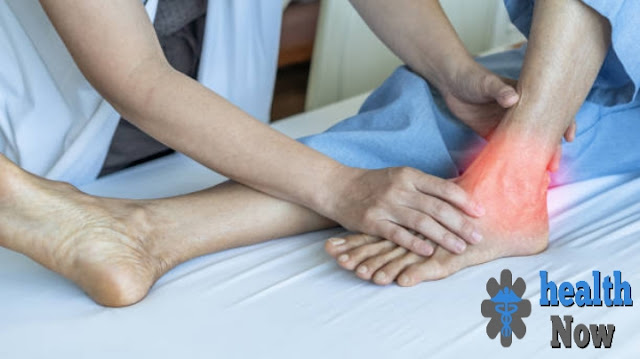What are gout and its relationship to smoking?
Gout is a mind-boggling kind of joint inflammation that can influence anybody. The contamination is depicted by unexpected and genuine attacks of anguish, enlarging, redness, and awareness in something like one joint, now and again influencing the huge toe.
A gout attack can happen unexpectedly and smoke increases the chance of developing gout, often waking you up at night with a consuming tendency to your big toe. The affected joint is hot and swollen, and thus painful to the point that the weight of a bedsheet may seem unbearable.
In our articles for today, we will talk about gout and its relationship to smoking, its causes and symptoms - and how to treat it.
What are the causes of gout?
Gout occurs when precious urate stones develop in the joints, resulting in the intense irritation and agony associated with gout attacks. Gemstones may form when there are elevated degrees of urate erosion into the blood. The body produces a corrosive substance when it separates purines, which are substances that are naturally tracked in the body.
These purines are also found in certain types of food sources, for example, red meat and organ meats such as the liver. Fish rich in purines include anchovies, sardines, oysters, scallops, trout, and fish. Drinking cocktails, especially liquor, and drinks enhanced with fructose (fructose) also increase urine erosion levels.
Under normal circumstances, the urate erosive substance is separated into the blood and passes through the kidneys into the urine. Be that as it may, now and then the body produces more than the upper scales of urine erosion, or the kidneys get rid of it in modest amounts more than they should. When this happens, urinary erosion may develop, leading to the formation of sharp, needle-like gemstones in the joint or surrounding tissue, causing pain, exacerbation, and expansion.
Also, here is a large segment of what smoking can seriously get gout. Which causes great pain in the big toe of the man with krystexxa gout.
What are its symptoms?
The signs and side effects of gout appear suddenly, often in the evening. They include:
- Severe joint pain. Gout generally affects the big toe, but it can affect any joint as well. Other commonly affected joints include the lower legs, knees, elbows, wrists, and fingers. Undoubtedly, an exacerbation reaches its maximum strength about four to 12 hours after its onset.
- Feeling awkward. After the intense pain is gone, discomfort in certain joints may last anywhere from two days to half a month. The attacks are bound to last longer and affect more joints.
- exacerbation and redness; Affected joints become swollen, painful, warm, and red when you have gout.
- Restricted range of motion. When gout worsens, you will not be able to move your joints normally.
diagnosed.
Specialists usually analyze gout in light of your side effects and the presence of the affected joint. Tests that help diagnose gout may include:
- Joint fluid test. Your primary care doctor may use a needle to draw fluid from the affected joint. Visible gemstones should be visible when the fluid is examined under a magnifying glass.
- blood test; Your primary care doctor may prescribe a blood test to determine the degree of urine erosion in the blood. Although sometimes the results of a blood test are deceptive. Some individuals have high degrees of urolithiasis but never support gout. Some individuals have side effects and signs of gout without the odd degrees of urine erosion in their blood.
- X-ray imaging. Joint X-rays may be of value to prevent various causes of joint pain or detect gout.
- (Ultrasound). This test uses sound waves to identify precious urate stones in joints or urine erosion stores.
- Dual-energy tomography. This test combines several X-ray images taken from different points to show urate stones in the joints, or krystexxa gout.
smoking and gout attack.
A recent study led by the Arthritis Care and Research Center recommended that smoking or tobacco smoke may lower gout. The exploration shows, though, that this benefit was a "27% lower risk" uniquely observed in men who were both lean and not overweight smokers. The urate levels in the guinea pigs were "essentially lower" than in people who were former smokers or who had never smoked.
Until recently no research has been done on the relationship between gout and smoking, and the results are new and uncertain.
Gout is a foot condition that requires special treatment and care. If you have any concerns about gout, reach out to a podiatrist from New England Foot and Ankle Specialists.
Treatment.
Gout meds are accessible in two structures that emphasize unique issues. The main sort lessens aggravation and torment related to gout assaults. The subsequent sort attempts to forestall gout entanglements by diminishing how much uric corrosive in the blood.
Which prescription is ideal for you relies upon how incessant and extreme your side effects are and some other medical issues you might have.
Medicines to treat gout attacks.
- Non-steroidal calming drugs. NSAIDs incorporate over-the-counter choices, like ibuprofen (Advil, Motrin IB, others) and naproxen sodium (Aleve), as well as more viable solution NSAIDs, like indomethacin (Indocin, Tivorbex) or celecoxib (Celebrex). NSAIDs convey a gamble of stomach torment, draining, and ulcers.
- Colchicine medicine. Your PCP might endorse colchicine (Colcrys, Gloperba, Mitigare), a pain-relieving that diminishes gout torment. In any case, there might be symptoms of the medication like sickness, heaving, and looseness of the bowels.
- corticosteroids; Corticosteroids, like prednisone, may alleviate gout aggravation and related torment. Corticosteroids might be recommended as tablets, or they might be infused into a joint. Results of corticosteroids incorporate mindset changes, expanded glucose levels, and hypertension.
Medicines to prevent gout complications.
Assuming you experience a few gout goes after every year, or on the other hand, if your gout assaults are less regular but more difficult, your primary care physician might prescribe prescriptions to decrease the gamble of gout-related complexities.
Assuming that joined X-beams show harm from gout, or you have to sandblast constant kidney illness, or kidney stones, you might be recommended drugs to bring down your body's uric corrosive levels.
- Drugs that block the discharge of uric corrosive. Medications like allopurinol (Aloprim, Lopurin, Zyloprim) and febuxostat (Uloric) decrease uric corrosive levels in the body. Allopurinol's incidental effects incorporate fever, rash, hepatitis, and kidney issues. Results of febuxostat incorporate rash, sickness, and diminished liver capacity. Febuxostat may likewise expand the gamble of death from heart causes.
- Drugs that help dispose of uric corrosive. Medications like probenecid (Probalan) work on the kidneys' capacity to eliminate uric corrosive from the body. Its incidental effects incorporate rash, stomach torment, and kidney stones.
Lifestyle and home emèdes.
Meds are the best method for treating gout assaults and forestalling repeating eruptions. Be that as it may, way of life decisions are additionally significant, and you might observe the accompanying fitting:
- Pick solid beverages. It is prescribed to lessen cocktails and different beverages improved with natural product sugar (fructose), and supplant them with drinking a lot of liquids, particularly water.
- Stay away from food sources that are high in purines. Red meat and organ meats, like liver, are particularly high in purines. Also, fish wealthy in purines incorporate anchovies, sardines, shellfish, scallops, trout, and fish. Interestingly, low-fat dairy items are a superior wellspring of protein for individuals at high gamble of gout.
- Practicing routinely and getting thinner. Keeping a solid bodyweightdiminishes the gamble of gout. Accordingly, pick light exercises, for example, strolling, cycling, and swimming, that don't pressure the joints.



